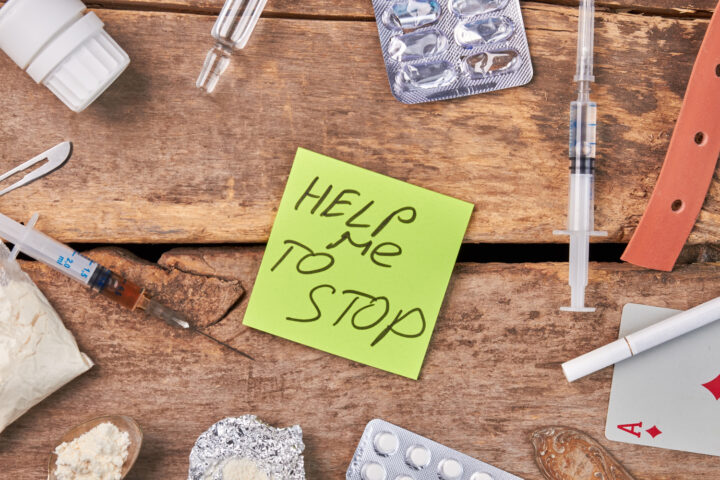Lorazepam, commonly known by the brand name Ativan, is a prescription medication used to treat anxiety disorders, insomnia, and seizures. As part of the benzodiazepine class, lorazepam affects the brain and central nervous system to create a calming effect. While highly effective when used as directed, lorazepam also carries the potential for addiction and abuse.
How Lorazepam Works
Lorazepam increases the activity of a neurotransmitter called GABA (gamma-aminobutyric acid) in the brain. GABA helps reduce anxiety, stress, and brain activity, resulting in a sedative effect that promotes relaxation and sleepiness. This calming effect can be very beneficial for those suffering from anxiety or sleep disorders, but it can also be habit-forming, especially with prolonged use or higher doses than prescribed.
Lorazepam’s Potential for Addiction
The Drug Enforcement Administration (DEA) classifies lorazepam as a Schedule IV controlled substance, recognizing its accepted medical use but also its potential for abuse, dependence, and addiction. Studies have shown that long-term use of lorazepam, typically beyond four weeks, significantly increases the risk of developing physical dependence and addiction.
Factors contributing to lorazepam addiction include:
- Taking higher doses than prescribed
- Using lorazepam more frequently or for longer than recommended
- Combining lorazepam with other substances, such as alcohol or opioids
- Using lorazepam recreationally to achieve a high
Signs and Symptoms of Lorazepam Addiction
Individuals who have developed an addiction to lorazepam may exhibit various signs and symptoms, including:
- Strong cravings for the drug
- Taking more than the prescribed dose or using it for longer than recommended
- Spending significant time obtaining, using, and recovering from the drug’s effects
- Developing a tolerance, requiring higher doses to achieve the desired effects
- Experiencing withdrawal symptoms when attempting to stop or reduce use
- Neglecting responsibilities at work, school, or home due to drug use
- Continuing to use lorazepam despite negative consequences on health, relationships, or finances
- Inability to quit or cut back on use despite the desire to do so
Risks and Consequences of Lorazepam Addiction
Lorazepam addiction can have severe consequences on an individual’s physical and mental health, as well as their personal and professional life. Some of the risks associated with lorazepam addiction include:
- Impaired cognitive function and memory loss
- Increased risk of accidents and injuries due to sedation and impaired coordination
- Worsening of pre-existing mental health conditions, such as depression or anxiety
- Strained relationships with family and friends
- Job loss or academic failure
- Financial difficulties related to obtaining the drug
- Legal problems resulting from drug-related behaviors
Withdrawal from lorazepam can be difficult and potentially dangerous, with symptoms such as tremors, seizures, and hallucinations. Attempting to quit cold turkey without professional help can be risky and is not recommended.
Treatment for Lorazepam Addiction
Overcoming lorazepam addiction is challenging, but with the right support and treatment, lasting recovery is possible. Treatment typically begins with medically supervised detox to safely manage withdrawal symptoms. This is followed by comprehensive therapy to address the underlying causes of addiction and develop healthy coping strategies.
Comprehensive Treatment Approaches
1. Medically Supervised Detox:
This initial phase helps manage withdrawal symptoms safely, minimizing discomfort and health risks.
2. Individual Therapy:
One-on-one sessions with a therapist can help identify and address the root causes of addiction, such as underlying mental health issues or trauma.
3. Group Therapy:
Group sessions provide peer support and foster a sense of community, helping individuals share experiences and strategies for recovery.
4. Cognitive-Behavioral Therapy (CBT):
CBT helps individuals recognize and change negative thought patterns and behaviors that contribute to addiction.
5. Dialectical Behavior Therapy (DBT):
DBT combines CBT techniques with mindfulness practices to help individuals manage emotions and stress.
6. Holistic Therapies:
Complementary therapies, such as art and music therapy, promote relaxation and self-expression, aiding in overall healing.
7. Trauma-Focused Therapy:
This approach addresses past traumas that may have contributed to substance use, helping individuals process and heal from these experiences.
Supporting a Loved One Through Recovery
Families play a crucial role in the recovery process. Here are ways to support a loved one struggling with lorazepam addiction:
Encourage Professional Help
Seek out therapists and counselors who specialize in addiction. Professional support can provide the necessary guidance and treatment for recovery.
Create a Supportive Environment
Foster a safe, supportive, and non-judgmental environment at home. Encourage open communication and be patient and understanding of their experiences and feelings.
Promote Healthy Coping Strategies
Encourage activities that promote well-being, such as exercise, mindfulness, and engaging in hobbies. These activities can help replace the need for substances.
Stay Informed
Educate yourself about lorazepam, its effects, and the signs of misuse. Understanding the challenges your loved one faces can help you provide better support.
Build a Support Network
Encourage your loved one to build a strong support network, including friends, family, and support groups. Connecting with others who understand their experiences can provide invaluable support.
Focus on Aftercare
Aftercare is essential for maintaining sobriety. Encourage your loved one to continue with therapy, attend support group meetings, and follow their personalized aftercare plan.
Lorazepam, while an effective medication for treating anxiety and other conditions, carries a significant risk of addiction, particularly with long-term use or higher doses than prescribed. Recognizing the signs of addiction is crucial for seeking timely help and support. By understanding the risks associated with lorazepam and providing appropriate support and treatment, families in South Africa can play a crucial role in their loved ones’ journey to lasting sobriety and well-being.




